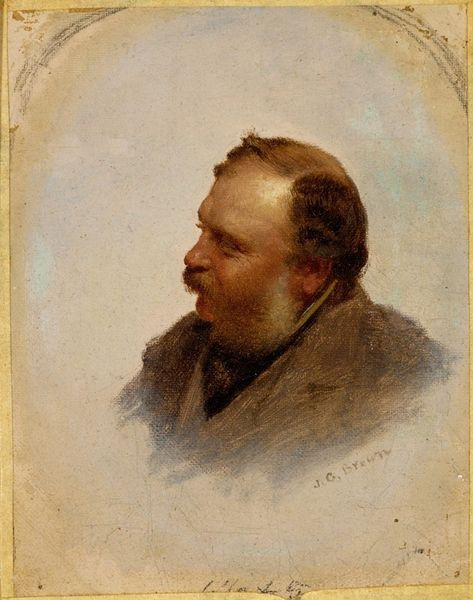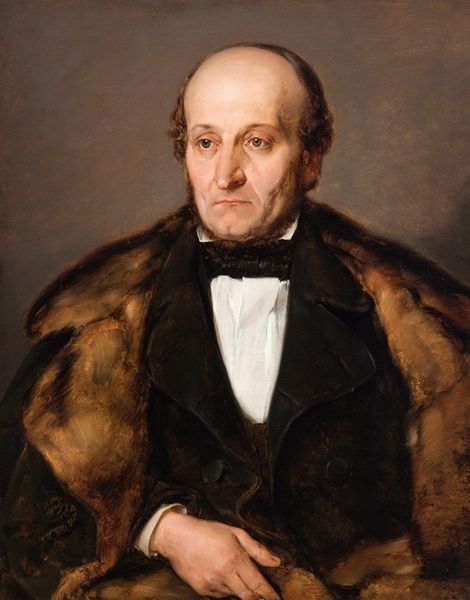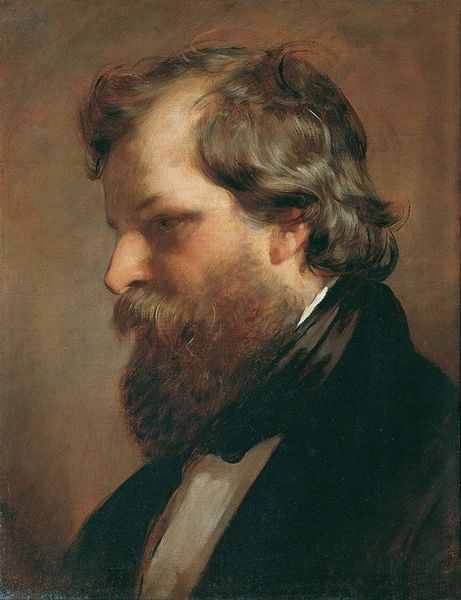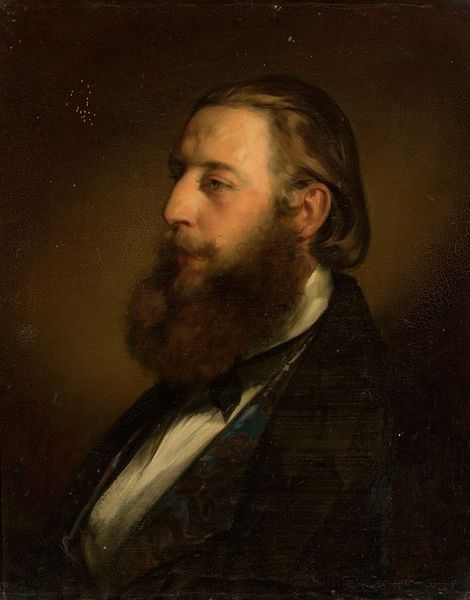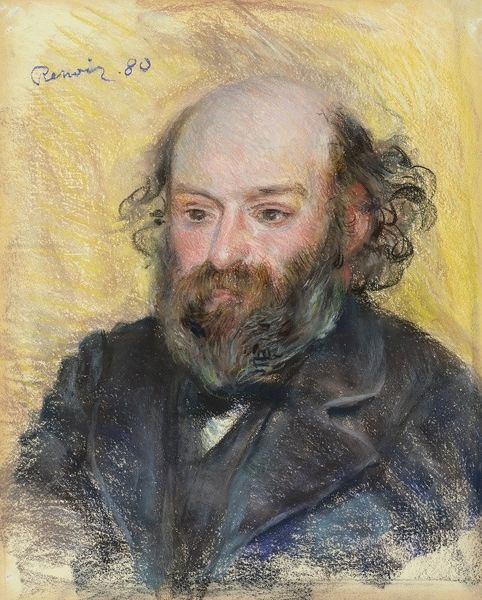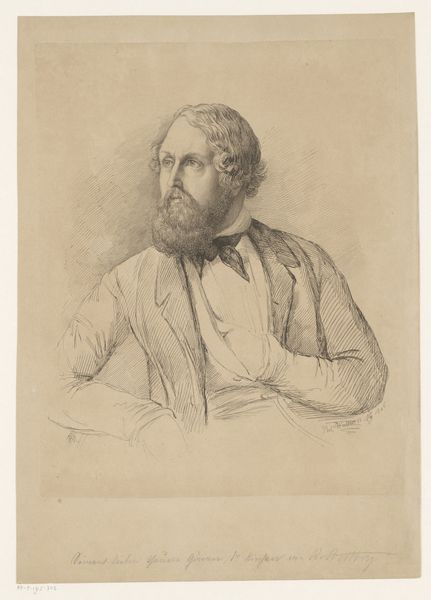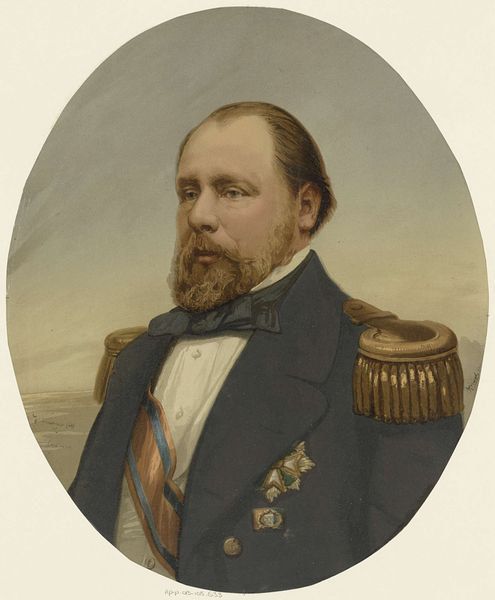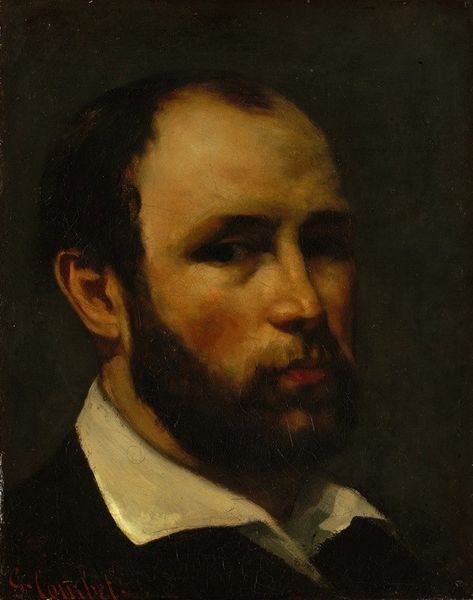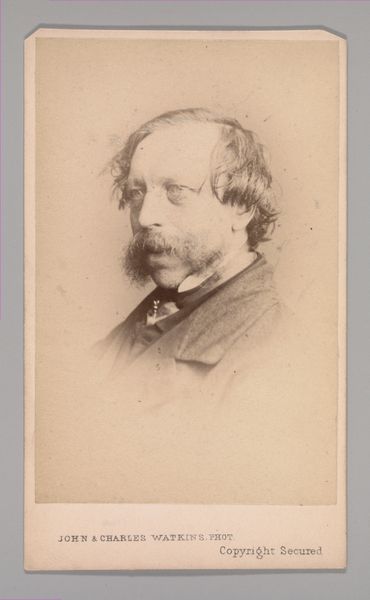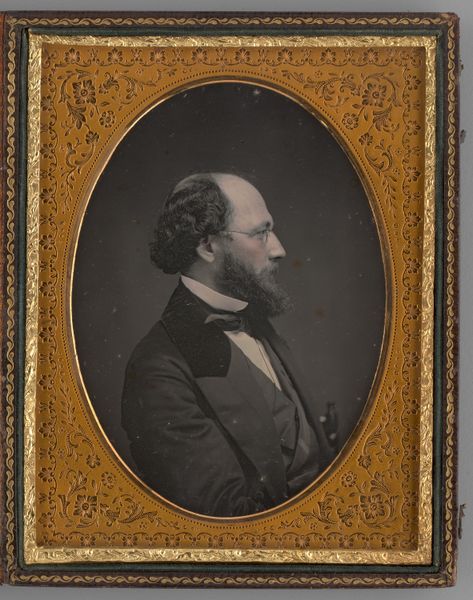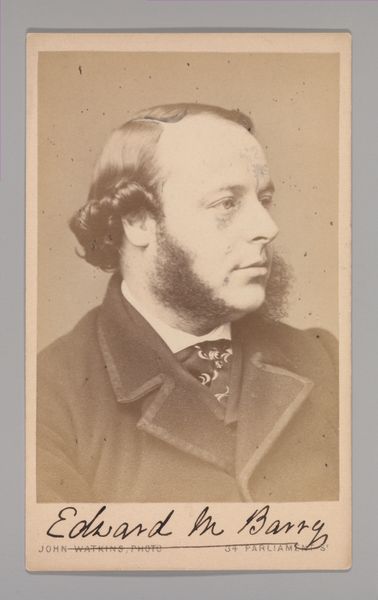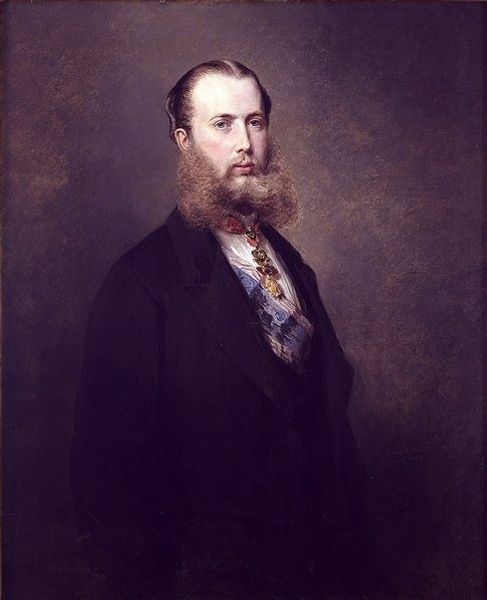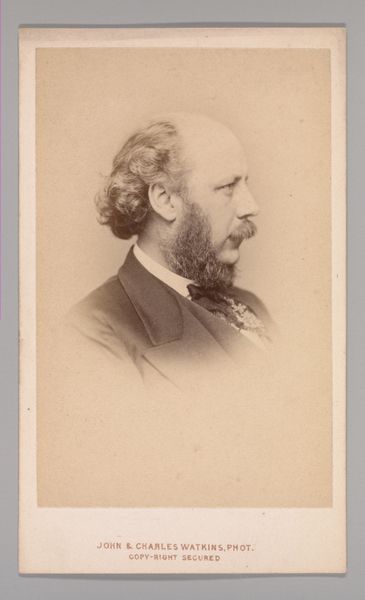
Copyright: Public Domain: Artvee
Curator: We're standing before Friedrich von Amerling's "Portrait of Władysław Branicki," completed in 1852. What's your first impression? Editor: Dark, rather somber, I think. The palette is quite restrained and there is visible craquelure, which I find both appealing and also somewhat melancholic. The gentleman certainly looks dignified, although he's caught in a profile which adds to that effect. Curator: The portrait offers insights into the aristocratic circles of the time and is evocative of Romantic and Realist trends in painting. We have this striking composition, created with oil paints, that captures Branicki in a somewhat contemplative mood. It speaks of the social elite and the way portraiture served to solidify and project status. Editor: And one could even say, cement power. The level of detail suggests considerable skill and patronage, I mean, the brushwork is impressive. Considering the date, I wonder how this commission was funded, who controlled its messaging, and to what extent the artistic process reflects that socioeconomic framework? Curator: The painting technique suggests a craftsman working within specific societal norms, providing his service for those who had political clout. But let's consider the setting—the use of light to sculpt the features, and the subtle handling of texture in the beard and hair—that requires refined skill. Were there apprentices involved in its production, how many layers of gesso where used? Editor: True, and understanding the artist's access to resources, to paints themselves, gives context to the whole piece. It brings the materiality of wealth to the surface when you begin to think of how such commissions also provided the very livelihood and reputation of its makers. But let’s not forget the cultural significance. Portraiture often operated as a visual archive, a form of political propaganda even. How was Branicki's identity presented to the world? Curator: It makes me wonder about his lineage, how the portrait served within the network of powerful families of the time. I agree; art has often played a crucial role in upholding established hierarchies. Editor: This work of art certainly gives a sense of those power dynamics. I appreciate the somber notes you have helped me unpack here and I think its an enduring witness of the artistic production of the epoch. Curator: Agreed, by understanding the materials used and the historical context that generated the portrait, we see both the subject and how artwork has long played a public role for private individuals.
Comments
No comments
Be the first to comment and join the conversation on the ultimate creative platform.
